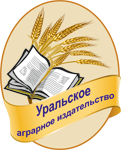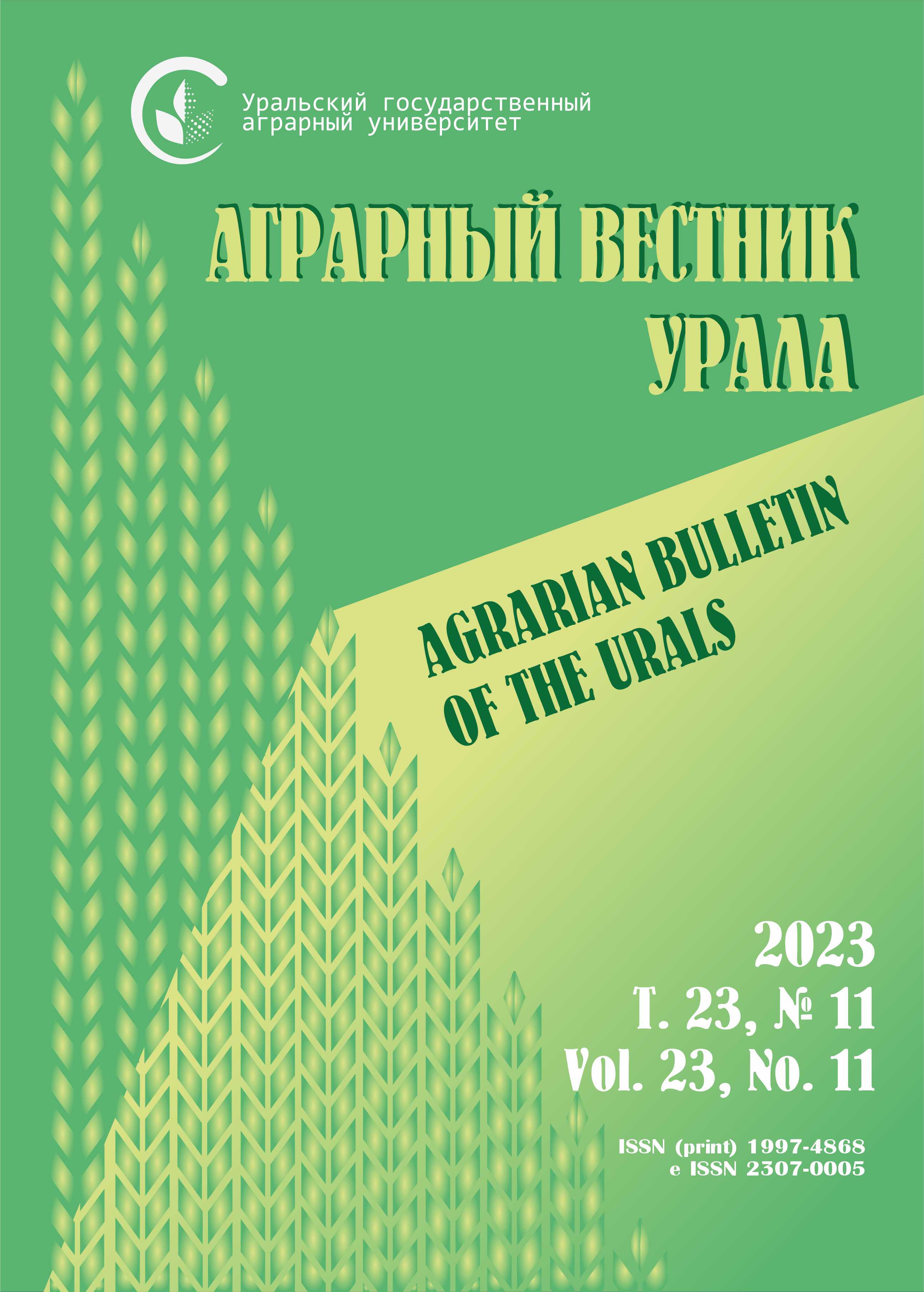Abstract. The features of the implementation of the production potential of cherry varieties in the conditions of southern horticulture are presented. The studies were carried out in the conditions of the Prikubanskaya fruit growing zone of the Krasnodar Krai in 2016–2022. The objects of research were 7 varieties of common cherry of various origins. The purpose of the research was to study the productive potential of cherry varieties and its main components, depending on the negatively changing environmental conditions. Methods. The research was carried out according to the “Program and methodology for the variety study of fruit, berry and nut crops” and “Program and methodology for the selection of fruit, berry and nut crops”. Statistical processing of the obtained data was carried out according to the method of B. A. Dospekhov. The studies were carried out using generally accepted and standard methods. The scientific novelty of the research lies in the identified patterns and features of the implementation of the production potential of cherry varieties in unstable environmental conditions and the impact of stress factors. According to the results of the research, early-fruiting varieties of cherries, Prizvanie and Ivanovna, which begin to bear fruit 2–3 years after planting, have been identified. It was found that the average fruit weight of the varieties varied from 2.98 to 6.38 g, depending on the biological characteristics of the variety and the conditions of the year. Large-fruited varieties with a fruit weight exceeding 5 g have been identified: Prizvanie (5.38 g), Timati (5.43 g), Ivanovna (6.38 g) and Khodosa (6.33 g). It was found that the yield also varied depending on stress factors and the degree of adaptability of varieties to them. Stably fruitful and high-yielding cherry varieties Ivanovna and Khodosa were identified, the average yield of which was 15.7 kg/tree. or 10.5 t/ha. It has been established that the dependence of the yield of cherry varieties of different origin on average annual temperatures is average (r = 0.65), on the sum of active temperatures – average (r = 0.37) and on the sum of precipitation – strong (r = 0.87). To create highly productive cherry plantations in the conditions of southern gardening, varieties Ivanovna and Khodosa are recommended.
cherry (Prunus cerasus L.), variety, productivity, precocity, fruit weight, adaptability, weather conditions
1. Kovalenko N. N. Mikrovishnya. Ispol'zovanie v selekcii kostochkovyh plodovyh kul'tur i ozelenenii = Microcerasus. Usage in the selection of stone fruit crops and landscaping: monografiya. Krasnodar: Prosveschenie-Yug, 2021. 391 s. EDN: https://elibrary.ru/PAGDTK
2. Vitkovskiy V. L. Plodovye rasteniya mira. Sankt-Peterburg: Izdatel'stvo «Lan'», 2003. 592 s.
3. Gulyaeva A. A., Berlova T. N., Gal'kova A. A., Efremov I. N. Ocenka sortov vishni geneticheskoy kollekcii VNIISPK v kachestve otcovski form pri provedenii gibridizacionnyh skreschivaniy // Vestnik agrarnoy nauki. 2022. № 5 (98). S. 102-106. DOI:https://doi.org/10.17238/issn2587-666X.2022.5.102. EDN: https://elibrary.ru/TRJJFB
4. Karaev M. K., Battalov S. B., Abdulgamidov M. D. Agrobiologicheskie i tovarno-tehnologicheskie pokazateli introducirovannyh sortov vishni v usloviyah predgornoy provincii respubliki Dagestan // Izvestiya sel'skohozyaystvennoy nauki Tavridy. 2022. № 30 (193). S. 40-50.
5. Dolya Yu. A. Vliyanie abioticheskih faktorov na osnovnye biologicheskie pokazateli sortov vishni obyknovennoy // Selekciya i sortorazvedenie sadovyh kul'tur. 2019. T. 6. № 1. S. 44-47. EDN: https://elibrary.ru/HRCDJT
6. Zaremuk R. Sh., Dolya Yu. A., Kopnina T. A. Biomorfologicheskie osobennosti formirovaniya i realizacii potenciala produktivnosti u sortov kostochkovyh kul'tur v usloviyah yuzhnogo sadovodstva // Sel'skohozyaystvennaya biologiya. 2020. T. 55. № 3. S. 573-587. DOI:https://doi.org/10.15389/agrobiology.2020.3.573rus. EDN: https://elibrary.ru/BEPJFG
7. Mischenko I.G. Fitosanitarnaya situaciya v patogeneze kostochkovyh kul'tur yuzhnogo regiona Rossii // Zaschita rasteniy ot vrednyh organizmov: materialy X mezhdunarodnoy nauchno-prakticheskoy konferencii, posvyaschennoy 100-letiyu Kubanskogo gosudarstvennogo agrarnogo universiteta. Krasnodar, 2021. S. 247-249. EDN: https://elibrary.ru/IRFJSQ
8. Sovremennye metodologiya, instrumentariy ocenki i otbora selekcionnogo materiala sadovyh kul'tur i vinograda: monografiya / Krasnodar: FGBNU SKFNCSVV, 2017. 282 s.
9. Dragavceva I. A., Ahmatova Z. P., Morenec A. S. Osobennosti i tendencii variabel'nosti limitiruyuschih faktorov sredy dlya plodovyh kul'tur Severnogo Kavkaza v zimne-vesenniy period s uchetom izmeneniya klimata (na primere abrikosa) // Sadovodstvo i vinogradarstvo. 2018. № 4. S. 38-43. DOI:https://doi.org/10.31676/0235-2591-2018-4-38-43 EDN: https://elibrary.ru/XXRHHV
10. Karimi V., Karami E., Keshavarz M. Climate change and agriculture: Impacts and adaptive responses in Iran // Journal of Integrative Agriculture. 2018. Vol. 17. Iss. 1. DOI:https://doi.org/10.1016/S2095-3119(17)61794-5.
11. Woznicki T. L., Heide O. M., Sønsteby A., Måge F., Remberg S. F. Climate warming en hances flower formation, earliness of blooming and fruit size in plum (Prunus domestica L.) in the cool Nordic environment // Scientia Horticulturae. 2019. Vol. 257. No. 17. Article number 108750. DOI:https://doi.org/10.1016/j.scienta.2019.108750.
12. Salama A.-M.; Ezzat A., El-Ramady H., Alam-Eldein S. M., Okba S., Elmenofy H. M., Hassan I. F., Illés A., Holb I. J. Temperate Fruit Trees under Climate Change: Challenges for Dormancy and Chilling Requirements in Warm Winter Regions. Horticulturae 2021. Vol. 7. Article number 86. DOI: 0.3390/horticulturae7040086.
13. Bondarenko L. V., Maslova O. V., Belkina A. V., Suhareva K. V. Global'noe izmenenie klimata i ego posledstviya // Vestnik Rossiyskogo ekonomicheskogo universiteta imeni G. V. Plehanova. 2018. № 2. S. 84-93. DOI:https://doi.org/10.21686/2413-2829-2018-2-84-93. EDN: https://elibrary.ru/YWMJMQ
14. Chawla R., Sheokand A., Roop Rai M. and Kumar Sadawarti R. Impact of climate change on fruit production and various approaches to mitigate these impacts // The Pharma Innovation Journal. 2021. No. 10 (3). Pp. 564-571.
15. Sønsteby A., Heide O. M. Temperature effects on growth and floral initiation in cherry (Prunus avium L.) // Scientia Horticulturae. Vol. 257. Article number 108762. DOI:https://doi.org/10.1016/j.scienta.2019.108762.
16. Dolya Yu. A., Zaremuk R. Sh. Osobennosti sezonnogo razvitiya vishni obyknovennoy (Cerasus Vulgaris L.) i formirovanie biologo-morfologicheskih pokazateley produktivnosti // Plodovodstvo i vinogradarstvo Yuga Rossii. 2020. № 64 (4). S. 251-266. DOI:https://doi.org/10.30679/2219-5335-2020-4-64-251-266. EDN: https://elibrary.ru/ABPDXK
17. Solonkin A., Nikolskaya O., Seminchenko E. The Effect of Low-Growing Rootstocks on the Adaptability and Productivity of Sour Cherry Varieties (Prunus cerasus L.) in Arid Conditions // Horticulturae 2022. No. 8. Article number 400. DOI:https://doi.org/10.3390/horticulturae8050400. EDN: https://elibrary.ru/GXGEBN
18. Programma i metodika selekcii plodovyh, yagodnyh i orehoplodnyh kul'tur / Pod obschey redakciey akademika RASHN, doktora sel'skohozyaystvennyh nauk E. N. Sedova. Orel: Izd-vo Vserossiyskogo nauchno-issledovatel'skogo instituta selekcii plodovyh kul'tur, 1995. 502 c.
19. Programma i metodika sortoizucheniya plodovyh, yagodnyh i orehoplodnyh kul'tur. Orel.: Izd-vo VNIISPK. 1999. 606 s.
20. Dospehov B. A. Metodika polevogo opyta (s osnovami statisticheskoy obrabotki rezul'tatov issledovaniy). 5-e izd., dop. i pererab. Moskva: Agropromizdat, 1985. 351 s.









